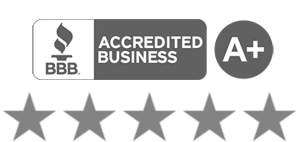Air scrubbers are machines designed to improve indoor air by removing harmful substances like mold spores, dust, pollen, and smoke. They pull in polluted air, trap these nasty particles with a filtration system, and push out cleaner air.
For mold and smoke removal, air scrubbers with HEPA filters really stand out as an effective solution. These filters catch super tiny particles that can mess with your health and the air you breathe.
Mold spores and smoke particles hang around in the air after things like fires or water damage. That means you could be breathing in air that’s more polluted than outdoor air, which is surprising and a bit worrying.
Air scrubbers work by cleaning the air at the highest level and targeting these pollutants directly. You’ll see them used a lot in cleanup projects where a healthier indoor environment is the goal.
Picking the right air scrubber depends on your space size and what kind of filter it uses. If you use these devices correctly, they make a big difference in managing indoor air pollution and keeping things healthier.
Air Scrubbers: Mold and Smoke Removal for Effective Indoor Air Quality Control
How Air Scrubbers Remove Mold and Smoke
Air scrubbers suck in contaminated air, filter out the bad stuff, and send cleaner air back out. They’re designed to improve indoor air by grabbing onto tiny things like mold spores, dust, pollen, and smoke.
This is especially important during mold and fire damage restoration when the air is at its worst.
Mechanisms for Eliminating Airborne Particles
Most air scrubbers use high-efficiency HEPA filters that trap particles as small as 0.3 microns. Dust, pollen, mold spores, and smoke particles get caught in these filters, so they’re not floating around anymore.
Some units add activated carbon filters, which soak up odors and chemical gases from smoke. Activated carbon is a real game-changer for removing smells and invisible toxins.
When the machine creates negative airflow, it pulls air through the filters faster than it can leak out. That keeps polluted air from drifting to other rooms.
Comparison with Air Purifiers
Air scrubbers and air purifiers both clean the air, but they’re not the same thing. Air scrubbers are powerful, heavy-duty machines built to tackle major air quality problems, especially after mold infestations or fire damage.
Air purifiers are more for everyday use and are usually smaller, quieter, and handle less serious pollutants. They’re not as effective when you need an aggressive solution for indoor air pollution.
Air Scrubbers Role in Mold Remediation and Restoration
When you’re conducting mold remediation, air scrubbers are essential. They grab airborne mold spores that get stirred up during cleaning or demolition, so you don’t end up with cross-contamination.
That’s huge for protecting workers and anyone living in the space. When restoring spaces after water or fire damage, these machines ensure cleaner, safer air by targeting and eliminating smoke and mold at the highest standard.
Key Technologies and Features in Air Scrubbers
Air scrubbers use several layers of technology to clean the air. You’ll find multiple filters, chemical treatments, and even light-based tech, all working together for a healthier indoor environment.
HEPA Filters and Pre-Filters
HEPA filters are the backbone of most air scrubbers. They remove at least 99.97% of particles that are 0.3 microns or bigger, such as dust, pollen, mold spores, and smoke.
Before air gets to the HEPA filter, it usually passes through a pre-filter. That catches larger stuff like dust and hair, so the HEPA filter doesn’t clog up right away. It’s a simple but effective solution for keeping the system running longer.
Swapping out HEPA filters regularly is a must. Some air scrubbers make it easy to get to the filters for quick changes.
Activated Carbon and UV-C Light
Activated carbon filters are great for targeting gases, odors, and chemical pollutants, especially from smoke or mold. This porous material traps those molecules, so you don’t have to smell or breathe them.
Some models use UV-C light, which kills or deactivates airborne bugs like mold, bacteria, and viruses. That way, you’re not just trapping stuff. You’re making sure it can’t grow back inside the air purification system.
Activated carbon and UV-C together mean cleaning up both visible particles and invisible threats.
Negative Air Machines and CADR Ratings
Negative air machines are portable air scrubbers that control airflow and pressure. They suck in contaminated air, filter it, then push out cleaner air, either outside or back into the room.
The Clean Air Delivery Rate (CADR) tells you how much clean air the unit puts out per minute. Higher CADR means a faster, more effective solution for cleaning the air.
It’s important to pick air scrubbers with CADR ratings that match your room size and the level of contamination.
Noise Levels and Air Changes Per Hour
Noise matters, especially if you’re running these in homes or offices. Industrial air scrubbers can get pretty loud, thanks to their powerful fans.
Air Changes Per Hour (ACH) shows how often the device replaces the air in a room. Higher ACH means faster cleaning, but usually more noise. Some newer models have variable-speed motors, so you can dial things down when you need quiet.
Selecting the Best Air Scrubber for Mold and Smoke
Choosing the right air scrubber comes down to your space, the type of contamination, and what you need it to do. The size, airflow, and intended use all matter for getting rid of dust, pollen, mold, and smoke at the highest level.
Portable vs. Commercial Air Scrubbers
Portable air scrubbers are lightweight and easy to move around. They’re great for small spaces or remodeling projects, such as for bedrooms or single rooms.
Commercial air scrubbers are bigger, less portable, but much more powerful. These are the machines you want for warehouses or full-building cleanups. They’re built to handle big jobs and tough indoor air pollution.
Pick portable air scrubbers for quick jobs or small spaces. Go commercial if you’re dealing with large areas or heavy contamination.
Assessing Room Size and CFM
CFM (cubic feet per minute) tells you how much air the scrubber moves. Higher CFM means better airflow and quicker results.
For rooms under 500 sq ft, 200-300 CFM usually works. Medium rooms (500-1500 sq ft) need 300-600 CFM. Big spaces need 600+ CFM or even multiple units.
Always check the scrubber’s coverage area before you buy. Too little CFM and you’re not cleaning the air fast enough. Higher CFM models cost more, but they get the job done faster.
Choosing Based on Usage: Remodeling or Restoration
During remodeling, you get a lot of dust, pollen, and mold spores from demolition. A portable air scrubber with a solid filtration system will help clean the air and keep things healthier indoors.
For restoration after fires or floods, smoke and mold can spread everywhere. Commercial air scrubbers with strong filters and activated carbon are the most effective solution for these situations. They’re designed to improve indoor air even when it’s at its worst.
If you need a quiet machine for remodeling, pick a portable unit. For heavy-duty restoration, power and filter strength matter more than portability.
Health and Safety Considerations
Using air scrubbers can really help people breathe easier after mold or smoke damage. These machines remove harmful particles and support recovery by cleaning the air at the highest level.
Impact on Respiratory Issues
Air scrubbers trap tiny irritants like dust, pollen, mold spores, smoke, and allergens. This makes a healthier indoor environment, especially for people with asthma, allergies, or other breathing problems.
HEPA filters are effective as they trap 99.97% of airborne particles. That means less stuff in the air to trigger flare-ups. Unlike ozone generators, air scrubbers with HEPA and activated carbon filtration are safe to use around people.
Improving Indoor Environments Post-Damage
After fire or mold damage, the air inside is often more polluted than outdoor air. Standard fans or open windows simply aren’t enough to clear the air.
Air scrubbers pull in the polluted air, trap mold spores, smoke, and odors, and send out cleaner air. Regular filter changes keep the machine working as an effective solution for indoor air pollution.
Frequently Asked Questions
What are the most effective air scrubber models for mold remediation?
Look for models with true HEPA filters and UV lamps. These features capture and neutralize airborne mold spores. Industrial-grade filtration systems tend to work best for both home and commercial use.
How do I properly use an air scrubber for mold removal?
Let it run continuously during and after cleanup, sometimes for hours or even days. Place the unit to maximize airflow, and swap out filters regularly to keep things running at the highest level.
Can air scrubbers remove smoke particles as well as mold?
Absolutely. Air scrubbers with activated carbon and HEPA filters capture smoke particles and odors. They’ll help clean the air after fires or heavy indoor smoking.
Is it better to rent or purchase an air scrubber for a single mold removal project?
Renting is usually more cost-effective for one-time jobs. You get access to high-quality machines without the big upfront cost. If you’ll need it often, buying might make more sense.
What are the advantages of integrating an air scrubber into an HVAC system?
Integration means you’re cleaning the air throughout your whole home, not just in one room. It removes dust, pollen, allergens, mold spores, and odors from the air as it circulates. That’s a big step toward a healthier indoor environment without extra equipment cluttering your space.
How effective are air scrubbers in handling construction dust during renovation?
Air scrubbers with a strong filtration system and activated carbon can clean the air by trapping dust, pollen, and other fine particles at the highest level during renovation. These portable air scrubbers are designed to improve indoor air quality, which can be more polluted than outdoor air, especially with all that construction dust flying around.
If you want an effective solution for indoor air pollution, running an air purification system while you work makes a noticeable difference. It creates a healthier indoor environment by capturing debris and dust that would otherwise end up in your lungs.
Denver Clean-up & Restoration Services
With over 150 years of combined experience, the Colorado Cleanup Services, Inc. team has the knowledge, skill, and commitment necessary to handle any emergency cleanup services you may require. From flood and fire damage restoration to sewage backup and coronavirus cleanup services in Denver, CO, you can always turn to us when you need deep, disinfecting cleaning for your home or business.
Family-owned and operated, our cleaning company is proud to provide the services of trained and certified technicians to all our clients. Our impressive team knows what it takes to return damaged properties to their original condition with the highest level of professionalism. Don’t settle for anything less when you require high-quality disaster recovery services. Our team is available 24 hours a day, 7 days a week to ensure you receive the help you need when you need it. Give us a call: 303-237-4406.





